Well hello there fellow sock crocheters!
This is the second post in a Blog Hop for the Sock CAL 2018. Last week, Tamara from @craftyescapism kicked it all off with her blog post on ‘Sock Making Tips’. Next Saturday (29th) the blog is hopping over to Caroline from Mind and Muse Crafts as she takes us through ‘To knit or to crochet? That is the question’ and on the Sunday it hops again to Deanne of Addydae Designs as she tackles ‘Sock Anatomy’. I have popped links to all of the blog hop contributors at the bottom of the blog.
I have been crocheting socks now for about three years. Over that time, I have tried and tested different yarn weights, colours, blends etc. I have learned some valuable lessons along the way and want to share them with you in this post. I also touch on some of the ethical/environmental factors to think about when you are choosing your yarns.
Blend
This is probably the key factor in getting a pair of socks that will ease onto your foot, last for years, keep you warm and is very important if you have ethical parameters too.
There are so many yarn bases out there these days and it is now much easier to find a blend of fibres that suit your requirements, in part because of the huge love for indie dyed yarns and the expansion this has created in our yarn community.
You don’t have to use a blended yarn, one of my favourites is 100% Bluefaced Leicester (BFL).
Wool and other animal fibres (renewable and biodegradable)
Merino – needs to have nylon in it to be used as a sock yarn. You will see a lot of sock yarn being sold which is an 80% Merino, 20% Nylon mix (most likely super-washed (SW)). If what you are after is a very stable yarn that will feel the same at the beginning of the ball as it does at the end and give you no problems when using it then this is the yarn for you. I have to add that it doesn’t set my heart beating because I get bored by the homogeny of it (unless it is full of fantastic colours in which case I view it in a slightly more positive light).
BFL and other long staple length fibres - these do not need to have nylon in them to make them suitable for making socks, but they do need to be spun with a high twist. You could also check out Corriedale and Mohair as alternatives to Merino. One of my main reasons for loving these types of yarns is that they are warm - really warm. For me, they also have a bit more character than the 80:20 Merino blend and I enjoy the feel of the yarn as I work with it. When I go from other woolen socks one day, to wearing Merino socks the next day, my feet are noticeably colder.
Alpaca – This is a really strong fibre that is soft, warm, hard-wearing and will wick moisture away. It is also often used by those that are allergic to wool. I have only ever knitted socks with Alpaca blended in the yarn and one of the concerns that I would have over using pure alpaca fibre for crocheted socks is whether the shape and form would remain so that the socks would stay up. I am off to a yarn festival next week and one of the vendors sells an alpaca/BFK blend sock yarn. I plan on getting some and creating another blog post when I have the answer.
Natural Fibres (renewable and biodegradable)
There are many natural fibres that you will come across, such as silk, bamboo, cotton, linen, nettle, maize, soy, hemp... These are great if you do not wish to use animal fibre to make socks with, but there are a few factors to think about:
Elasticity – is there any ‘give’ in the yarn? Normally I would say that 100% cotton yarn has very little give and is unlikely to create nice, comfortable, fitted socks. However, some surfing showed me this 98% cotton 2% acrylic blend yarn that lots of sock crocheters and knitters use – Cascade Fixation. Apparently, the acrylic added brings the elasticity required.
Blend – in my opinion, I wouldn’t want to crochet socks from any of the natural fibres unless they were blended. Having fondled most of them in their pure yarn forms, I am yet to be convinced that they have the key qualities required for crocheting socks (hardwearing, soft, elastic, high twist). These are most likely going to be blended with acrylic that brings elasticity (such as lycra).
If you are looking for these types of yarns because you are vegan, a simple internet search for “vegan sock yarns” will give you lots of suggestions.
Acrylic (non-renewable and non-biodegradable)
Acrylic is a man-made fibre which comes from crude oil and is therefore non-renewable. Lots of crafters love acrylic because it is a cheap yarn to buy and they love that it is machine washable and comes in a huge array of colours.
There are many acrylic sock yarns on the market place. Acrylic is also used to blend with natural fibres and animal fibres to create more durable socks. Sometimes this is by adding nylon into the mix (usually with the wool blends) and sometimes it is by super wash treating the fibres to make them more durable.
I don’t tend to work with high percentage acrylic yarn. I do have yarn blends in my stash and super wash yarns in my stash. These are yarns that I try to buy infrequently and do so when the yarn is fit for purpose, such as socks that require extra durability.
A quick note on the use of nylon and super-wash in socks
There is some very interesting information becoming available on the use of petroleum derived materials being used in the yarn industry. I want to do a whole post on super wash v non-super wash but I want it to be properly researched which is going to take time that I don’t have at the moment
I am also on a long term mission to test out different sock wools without nylon, but again, that takes time. As a bit of a placeholder, here is a link to my friend Christine’s blog. She is an amazing sock knitter and is fantastic about documenting her journey and teaching others how to knit socks:
https://www.winwickmum.co.uk/p/no-nylon-sock-yarn-reviews.html
Twist
This is the how tightly the yarn strands have been plied together. In generally a high twist yarns will be smoother, less hairy and feel less plump. I low twist yarn will be hairy, bouncy and soft.
Why high twist for socks? Well, it helps with wear and tear on the socks, reducing abrasion and pilling, so your socks last longer. I am really hard on my socks – I have pokey toes and am a heavy tread, so anything that helps my handmade socks last longer is good.

The smoothness of a high twist yarn can also make it much easier to crochet with – especially if you are a tight crocheter. If the yarn hasn’t been plied with a high enough twist, the chances are that your crochet hook will slip between the plies. This either leads to you having to undo your work – annoying, or, continue which means that you have weak areas in your sock because you haven’t crocheted with the full ply of your yarn. Life is just too short to crochet socks with a yarn that splits and a high twist yarns is how you get around that.

Colour
This can be a really tricky one when you are crocheting socks. Many of the ‘sock yarns’ that are dyed are done so with knitted socks in mind. This can lead to colour-pooling when you crochet up your socks. If you like that effect then great. I’m not personally a fan.
So, if you want to crochet with indie dyed sock yarn, your best bet is to find a dyer that understands the requirements for crocheting. I can point you to two sources here:
RiverKnits – Becci and Marcus are UK based and dye yarns that work brilliantly for crochet. I regularly use their 100% BFL 4 ply (fingering weight) yarn for crochet projects.
Little Bean Loves Yarn - Kayleen dyes yarn with crocheters in mind and is well aware of the issues of colour pooling.
What to look for/avoid if you don’t like colour pooling:
1 – Try to find yarns that have quick colour changes.
2 – Also look for yarns that have a very dominant main colour and the occasional small splattering of colour.
3 – Don’t go for a variegated yarn and instead put in contrast cuff, heels and toes. This can be very striking. Just remember that colour changes need to be made on the final yarn round hook of the stitch before the new colour is required.
The lovely Marta will be covering ‘Colour and colour patterns’ in her blog hop on Saturday 13th October.
Stretch
This is one of the biggest issues that people come up against with crocheted socks. Crocheted socks do not stretch in the same way that knitted or commercially bought socks stretch.
To combat this, you have to be aware of the anatomy of your foot and how to create a well fitted sock. Kathryn from the Crafternoon Treats Podcast has created a great blog post on this subject.
Your choice of sock yarn also has a part to play. Choose something with some level of elasticity so that there is some movement in the yarn when you put the sock on and take it off again. Not enough and you may well struggle to get the sock on in the first place or it may be baggy and not stay on your foot.
Making the right choices in yarn, pattern and understanding the shape and size of your feet can only help towards sock crocheting success.
Hairy yarn
In advance of writing this blog post, I asked the Crochet Clan (the crochet community that I am part of – see #CrochetClan on Instagram) what their favourite sock yarns were. I was very surprised that one of my nemesis crochet sock yarns came up repeatedly as a firm favourite.
I like West Yorkshire Spinners Signature 4 ply for knitting projects but cannot get on with it for crochet. I suspect that this is down to two factors:
1 – I am a tight crocheter.
2 – WYS 4 ply is quite toothy/hairy.
When you combine these two factors, my hook gets tangled up in the stray fibres and I have to keep on ripping my work back which is difficult because I am a tight crocheter and the stray fibres comingle and make ripping back difficult. I know that the resulting sock is warm and comfortable but the lack of crochet enjoyment makes me turn to other, smoother yarns instead.
If you are also a tight crocheter, you may want to try working with smoother yarns that are less likely to catch.
Yarn weight
This is a really important factor when choosing your yarn. Crochet by its very nature creates quite a dense fabric. The sole of most crocheted sock designs uses dc (sc US), extended dc (extended sc US) or linked dc ( linked sc US). This makes it really quite comfortable on the soles of your feet but dc as a stitch is very dense.
If you use a worsted/aran weight yarn for socks, you will likely struggle to get your everyday shoes or boots on but they may be perfect for sloppy wellies, walking boots and bed socks.
The same is true for DK weight crocheted socks.
If you want to crochet a sock that can fit into your everyday shoes and boots then I thoroughly recommend that you look at 4ply/fingering weight yarn. At an absolute push I would move to a sport weight yarn.
The most comfortable socks that I have crocheted have used yarn that is around 425m/465yds per 100g. The yarn is thinner which creates a lighter, smoother fabric that is wearable.
Choose the right weight of yarn for the way you want to use the socks.

Washing and care
A few final hints on looking after your precious crocheted sock yarns:
-
Either keep your yarn band in a safe place with a strand of the yarn around it as a reminder of the wash care instructions or only buy yarn that can all be washed in the same way so that you always know how they should be cared for. I also keep a project notebook that I can always refer back to and add a strand of each yarn into that.
-
Usually, I would ball up my socks together which means pulling one over the other and the cuff of the outer sock being under constant stretch. Given that baggy crocheted socks can be a real issue, just store them away flat or folded together – don’t ball them.
-
You don’t need to wash handmade socks as often. Honestly, it’s not as grim as it sounds. I wash mine after two days of use because the yarn I use is fine with that. It doesn’t smell and I am prolonging the life of my socks by wearing them for longer.
-
When I do wash my socks, I wash all of them on a wool wash in my machine. I tend to play Russian roulette with my woollens though, so don’t take me as a good example. I only do this because I am yet to come across a sock yarn (expensive or more affordable) that hasn’t survived our wool wash (30 degree, 50 minute, standard washing powder and softener) cycle. I often don’t even get to eat breakfast, so definitely don’t have enough hours in the day to handwash my socks.
-
If you get a hole in your socks – don’t throw them away, just darn them. This is definitely harder with crocheted socks so I would personally take a different approach and go down the visible mending route. If you do an internet image search on ‘visible mending socks’, you will see hundreds of images and places to look further. Using a contrast yarn, you can really show of your mending skills.
-
If you have any sock yarn left at the end of a project, keep it balled up and in a separate bag. I have a large drawstring bag full of little bits of sock yarn, waiting patiently to be used as contrast cuffs/toes/heels or for darning.

Crochet Clan favourite sock yarns for crochet
Last weekend I asked the Crochet Clan what their favourite yarn was for crocheted socks. Here is what they had to say:
-
Nurturing Fibres Super Twist (nylon free)
-
Cascade Heritage
-
Cascade Heritage Paints
-
Qing Fibre Super Soft Sock Qing had none in stock so I am pointing you to lovely Michelle from The Loveliest Yarn Company who does!
-
Anything BFL, high twist with nylon (my money is on RiverKnits )
-
Sweet Georgia Tough Love Sock
-
West Yorkshire Spinners Signature 4 ply
-
It's a Stitch Up Dynamite DK
-
Fjord Fibres Sock Yarn
-
Drops Fabel
-
Opal sock yarn
There are so many options out there, so if you are unsure, start with affordable and then see what people have to say about their yarn choices throughout the #SockCAL2018
My favourite socks yarns for crochet (so far)
Long staple length (not Merino), high twist, little to no hairy/toothyness, self-coloured or short colour changes if indie dyed, 100% wool or 80% wool, 20% nylon and ideally non-super wash. That really narrows the field.
Whilst typing up this blog, I have just ordered two skeins of yarn. This is what happens when I have yarn on the brain and am about to kick off the #SockCAL2018.
I bought ‘Bear Twist’ from Bernie at Bear in Sheep’s Clothing. It’s 100g/400m/437yds, 100% Corriedale, no nylon, non-super wash. I think that it has a “dominant main colour and the occasional small splattering of colour” and so works within my preferred colour parameters for variegated yarns.
I also bought an 80% Corriedale/20% nylon, non-super wash skein (100g/400m/437yds) for Kathryn at Crafternoon Treats. This is a semi-tonal skein that won’t pool.
Watch this space to see whether there is a difference with the addition of 20% nylon or not?
On one final note, no matter how much you are enjoying using the yarn, if you aren't enjoying the pattern, change it. Even though crocheting socks is a reasonably quick project, an unenjoyable/ bad pattern is just frustrating. I frogged three crocheted socks this time last year because I couldn't face making the second ones because of the pattern, yarn choice, or both!
It seems that once again, I am incapable of writing a short, pithy blog post. Hopefully you found the information genuinely helpful.
If you want to interact with me, Instagram is the best place and you can catch me @crochet_circle_podcast @faydhdesigns and @knitithookit
The Blog Hop
#1 Sat 15th Sep - Sock Making Tips – Tamara (http://www.craftyescapism.com/)
#2 Sat 22nd Sep - Yarn Choice - Fay (https://www.knitit-hookit-craftit.com/)
#3 Sat 29th Sep - Knit vs Crochet Socks - Caroline (https://www.mindandmusecrafts.com/)
#4 Sun 30th Sep - Sock Anatomy - Deanne (http://www.addydae.com/)
#5 Sat 6 Oct - Toe up vs Cuff down Socks - Jo (http://jojotwinkletoes.blogspot.com/)
#6 Sat 13th Oct - Colour & colour patterns - Marta (http://mrsdaftspaniel.blogspot.com/)
#7 Sat 20th Oct - Customising socks - Kathryn (http://crafternoontreats.com/)
#8 Sat 27th Oct - Crochet Sock Heels are not Scary - Karen (https://www.karenwhooley.com/)



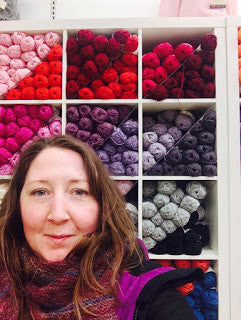
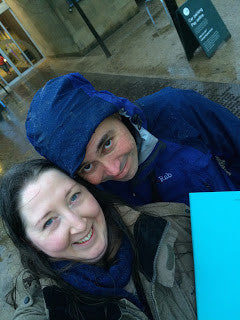
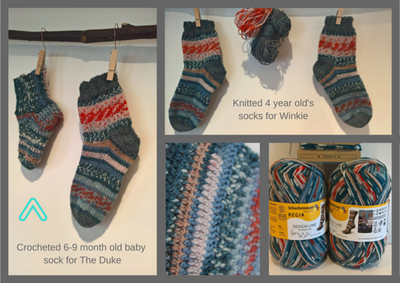
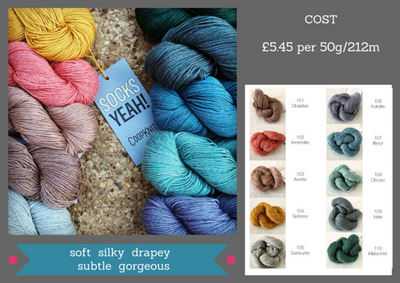
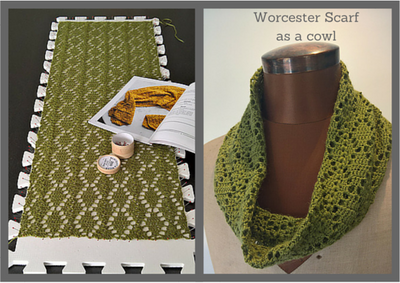
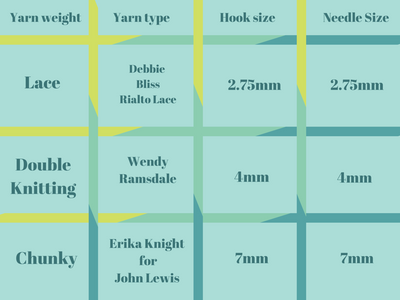
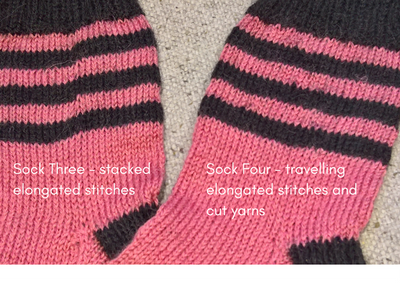
hcq medication hydroxychloroquine chloroquine plaquenil
Learn how to build a profitable affiliate marketing business by selling other people’s products! Tap into your share of a $12+ billion business model. Read More about it here: http://bit.ly/start-your-own-successful-affiliate-marketing-business
tadalafil natural substitute cialis online cialis tadalafil
heart rate watch walmart hydroxychloroquine oral is chloroquine phosphate over the counter
tadalafil 5mg tablets where to get tadalafil tadalafil 5mg tablets